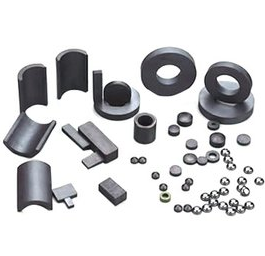
Dongguan Magnetoelectronics Technology Co. Ltd..
Contact: Miss Zhang
Tel: 0769-22336260
Mailbox: 3468754465@qq.com
Website: www.magpresee.com
Address: Room 102,No.7 Xingye Road,Low Chung,Gaobu Town,Guangdong,Dongguan City,Guangdong province
The ferrite magnetic tiles are widely used, especially in recent years, when ferrite is used for strong magnetic fields, so the use of ferrite magnetic tiles is also increasingly widespread, and is widely used in broadband domain Transformers. Noise filters, communication Transformers, etc.. Since these uses are related to signal processing, most of them use the characteristics of ferrite in a weak magnetic field.
In recent years, more and more ferrites have been used for strong magnetic fields, so that the characteristics of the MnZn ferrite with the highest saturation flux density in the soft magnet oxygen body can be used as a power transformer and a core of the choke coil. More pull more. In these applications, high saturation flux density is the most important condition. Of course, in cases where the number of working weeks is relatively low, metallic magnetic materials such as Silicon steel and alloys have their inherent advantages, but in the high cyclic wave band region of thousands of Hertz to several megahertz, MnZn ferrite can only be used due to increased Eddy current loss. In particular, the ferrite for this purpose is a power ferrite. Due to its miniaturization of power supply and the requirement of high number of working weeks, with the popularization of electronic equipment and the development trend of light, thin and short, the demand for power-type ferrite will further increase.
Ni-Zn-and Ni-Cu-Zn ferrites are mainly used in the so-called radio wave weeks range from hundreds of kHz to hundreds of megahertz. The first requirement for magnetic materials in this week's wave number band is low loss. The eddy current loss, especially residual loss, increases rapidly with the increase of the number of weeks. Residual losses mainly include two types: relaxation loss and resonance loss. The former is due to the rotation of magnetization and the movement of the category wall later than the change of the AC magnetic field, resulting in a difference in position. The latter is caused by the anisotropic magnetic field in the ferromagnetic body in the alternating magnetic field, which is a low-frequency resonance in a high-permeability material.
